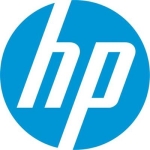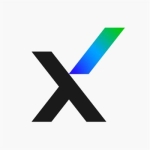What is our primary use case?
We're a construction company using SentinelOne for endpoint security with endpoint detection and response. SentinelOne covers all of our endpoints and servers. It protects everyone across the company, even those not actively using an AV.
How has it helped my organization?
SentinelOne's managed detection response service Vigilance Respond is convenient for companies like ours with small IT teams. If something happens on the weekend, SentinelOne steps in and resolves the issue. It's a false positive 97% of the time, but at least they're resolved instead of hanging around for us to find on Monday.
We have the Ranger feature for network scans, allowing us to pick up any new devices that show up on a network. That was especially useful for us when we shifted to working from home.
If two or more agents are in a remote network, they will scan the network and give you an inventory of the MAC addresses and device types they see. This is handy when you have a small office or someone working from home. We do not allow employees to bring their own devices, but people are plugging their company computers into their home network, exposing them to risks. The ability to report on connections in remote networks is handy.
What is most valuable?
SentinelOne's machine learning engine is purely behavioral. The engine will shut down anything that's bad, isolate the system from the network, and alert everyone. We had tremendous success with CylancePROTECT for over five years. Zero successful attacks. In 18 months in with SentinelOne, we've seen the same lack of drama. No endpoints have been compromised to the degree that it has negatively impacted our network.
What needs improvement?
Managing the false positives creates additional management overhead. The behavioral analysis engine might misinterpret real user behavior as malware. For example, a drafter was cleaning up a Revit folder and deleting 4,000 files. That looks like ransomware. The SentinelOne agent kicked his computer off the network.
We interrupted that process and then isolated his computer and the file server. It was somewhat disruptive in the middle of the day. At the same time, it was a perfect simulation of what ransomware would do, so it was reassuring that SentinelOne stepped up and said, "Nope!"
It was not a malicious process running that was detected. It was simply behavior he shouldn't have done. Now, our drafters know to co my team when they're going to do some file cleanup. The false positives are just inherent in just the large amount of poorly written software that's out there. Any competent antivirus is going to have a behavioral, heuristic engine looking at what's actually being done.
It might be something bad done by the software you use. We used a machine learning engine for five years. The Wire Hauser Corporation builds subpar software because they're supposed to be building lumber products. It triggered a false positive, that's about the only negative for any modern AV is just false positives.
In the future, I would like to see SentinelOne implement integrated patch management. It would be great to manage endpoint patching through SentinelOne. We're on our third patch manager in three years because they are lackluster. It would be nice to have a new patch management tool.
For how long have I used the solution?
I have been using Sentinel One for about a year and a half.
What do I think about the stability of the solution?
SentinelOne is stable and constantly improving. Today I did a demo of a new acquisition they made for Active Directory. Ranger is the product that scans networks. This is a new product from a company they bought.
They do automated scans of your Active Directory infrastructure to identify fixable problems and anyone trying to take advantage of the unfixable problems. They're improving their core product while adding new functionality and products that I'm interested in.
What do I think about the scalability of the solution?
SentinelOne is highly scalable. I know folks with 10 times the number of endpoints we have, and they're pleased with it. One fellow I know has 4,000 endpoints under management.
How are customer service and support?
I rate SentinelOne support nine out of 10. I wish our other vendors had tech support as good as SentinelOne. I can only think of one other vendor that possibly has better tech support, but the vast majority of software companies have sub-par tech support. Little goes wrong, but get a quick turnaround time when something comes up.
How would you rate customer service and support?
Which solution did I use previously and why did I switch?
We were using CylancePROTECT, one of the early innovators in machine learning next-gen AV. Then they added on an EDR component called CylanceOPTICS. CylancePROTECT was an outstanding product for us. It was extremely low overhead and highly efficient. It crushed it in the proof of concept and did an excellent job for us.
Blackberry acquired the solution in 2019, the last year of our three-year agreement. It was awful. Development essentially stopped. All of the intelligent people started leaving. I found out that some went to SentinelOne. It was clear my worst fears were realized: that Blackberry was going to screw up yet another good thing.
How was the initial setup?
I had prior experience with this kind of antivirus, so I thought setting up SentinelOne was very straightforward. We stood up three different products in the course of 60 days to do this test. I didn't think there was anything unusual or unexpected about setting it up. It's perfectly understandable if you know what you're doing.
We have automated tools for deploying software. The biggest problem was getting the old endpoint solution off and the new endpoint solution parked on top of it. We had a 30-day window to get it all done for 250 endpoints.
My IT group has four people, including me, but it's not hard to manage or deploy. It fits right within our normal imaging endpoints, so it's super-low overhead.
What about the implementation team?
We did the deployment in-house. I'm paranoid. I wouldn't let anybody touch our security software.
What's my experience with pricing, setup cost, and licensing?
We pay $30,000 a year for 275 endpoints. We're growing, so I plan to buy another 75 endpoints. There is still a year and a half left in my three-year subscription, so I'm going to increase my endpoint count by 30 percent.
I'm buying midterm. We're a little over our licensing right now—less than 10%—but we'll correct our device count and plan for future growth. We pay for additional managed detection and Ranger network scanning.
Which other solutions did I evaluate?
We started doing proofs of concept for a short list of candidates in October 2020 when things calmed down a little bit. In addition to SentinelOne, we were looking at Sophos Intercept X, and CrowdStrike Falcon, which I assumed would win the bake-off. I had every expectation that Falcon was going to be our new endpoint. SentinelOne was kind of a startup. CrowdStrike Falcon was number three. Our second choice would've been Sophos Intercept X.
We left behind traditional AVs like Symantec and Norton Antivirus in 2016. It's awful stuff. We would've been good with Intercept X or Falcon, but SentinelOne has just proven to be the right choice for what we're doing. I hope they don't get bought.
What other advice do I have?
I rate SentinelOne 10. It's an excellent next-gen AV with none of the signature-update nonsense. It'll kill anything that does something bad, which sometimes is an Adobe product, etc. False positives are expected in that situation, but it's not a problem.
If you're considering SentinelOne, devote time, money, and staff to a thorough proof of concept. If you don't test your use cases, You will regret it. Just assume it's going to be an exit project to do an endpoint security selection. Ignore Gartner's and the press. Don't pay attention to the big analysts. Read the peer reviews and the community feedback.
Do the heavy lifting with a proof of concept. If you think you're spending too much time on it, you're probably not spending enough. It's so important. Treat picking a product like you would any other big project.
Which deployment model are you using for this solution?
On-premises
Disclosure: My company does not have a business relationship with this vendor other than being a customer.



















